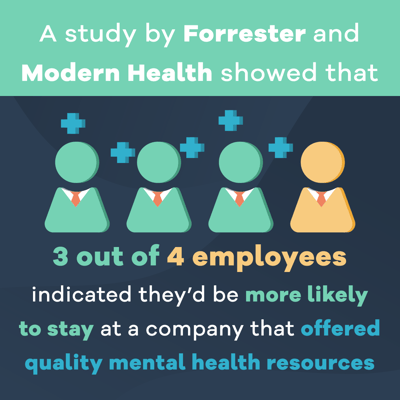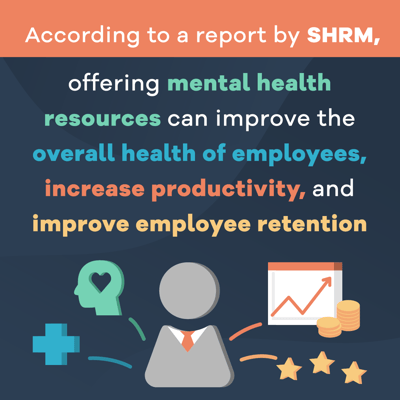Mental health in the workplace is an increasingly critical topic, gaining recognition from both a capitalistic and compassionate perspective. It's an issue that business owners and managers can no longer afford to overlook.
In this article, we'll explore the importance of prioritizing employee mental health and how businesses can instill a culture of well-being within their organizations.
The Capitalistic Lens
From a purely capitalistic perspective, employee mental health is integral to a company's success. Productivity, reliability, creativity, and effective communication are all essential traits for a successful team, and these traits heavily depend on a foundation of sound mental health. When employees feel that their work is integrated into their lives in an inspiring or, at the very least, tolerable manner, they are more likely to excel in their roles.
Conversely, ignoring mental health can lead to diminishing returns on employee effectiveness. The outdated notion of pushing employees to their limits ultimately results in decreased productivity, burnout, and high turnover rates.
The Compassionate Lens
In addition to the capitalist perspective, there is a moral and emotional obligation for business owners and founders to create an environment that fosters employee well-being. This compassionate approach has ripple effects throughout the organization and can significantly impact the experiences of employees.
Creating a workplace that values and nurtures the mental health of employees is, fundamentally, a morally sound choice. By placing employees' well-being at the forefront, business owners can create a more harmonious, thriving, and productive work environment.
Instilling a Culture of Mental Health Awareness
To prioritize mental health, organizations must begin at the top. This involves centering vulnerability and being open about personal experiences as leaders, managers, or owners. Leading by example, demonstrating that it's both acceptable and encouraged to be open about one's experiences, can set the stage for fostering an environment of trust and understanding.
Establishing consistent spaces where employees can discuss mental health topics without feeling judged or different is essential. This could include regular team meetings dedicated to well-being discussions or providing resources for employees to access professional mental health support.
A study by Forrester and Modern Health showed that 3 out of 4 employees indicated they'd be more likely to stay at a company that offered quality mental health resources.

Identifying Impact on Mental Health
It's crucial for businesses to identify how they impact their employees' mental health, either positively or negatively. This includes:
- Identifying sources of stress, anxiety, and disruption within the workplace and addressing them.
- Transforming negative impacts into positive ones by implementing policies that promote mental health.
- Offering resources, such as professional mental health support, to employees.
- Providing Meaning and Purpose
Work can be a significant source of purpose and meaning in people's lives. Even if it's not the sole source, work can contribute to a sense of fulfillment. Therefore, creating an environment where employees can connect their personal values and purpose to their work can have a profound impact on their overall well-being.
According to a report by SHRM, offering mental health resources can improve the overall health of employees, increase productivity, and improve employee retention.

Prioritizing employee mental health is not only a compassionate choice but also a savvy business decision. By recognizing that employees' well-being is integral to their productivity and happiness, business owners and managers can create environments where individuals thrive, and organizations flourish. It begins with leadership setting an example and permeates throughout the organization, ultimately leading to a healthier, more productive workforce.
.png?width=56&height=56&name=Duffy-01%20(1).png)



